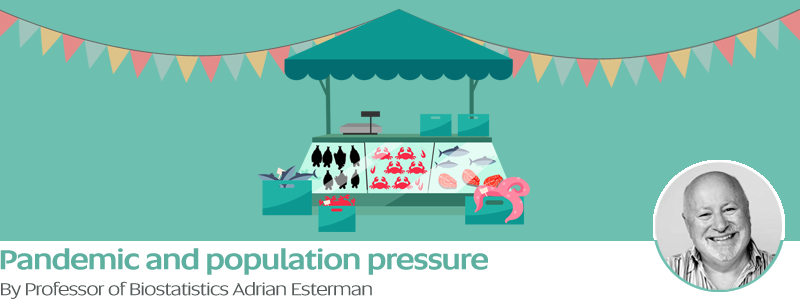
This will not be the last pandemic in our lifetime. Over hundreds of years, they used to occur on average every 30-100 years, but that gap is rapidly diminishing. In the past 60 years, we have had Hong Kong flu, Ebola virus, HIV/AIDS, SARS, swine flu, and now COVID-19.
Why are we seeing this escalation of pandemics?
One of the main reasons is population pressure. Many of these viruses have original hosts in animals such as bats that live in the tops of forests. Deforestation is destroying their natural habitat, bringing them in closer contact with humans.
Population pressure has also led to the increased consumption of wild animals, many of which are kept live in ‘wet markets’, again bringing humans and viruses in close contact.
Finally, intensive livestock practices in countries like China, mean that pigs and ducks are farmed together, providing a wonderful opportunity for swine flu, avian flu, and human flu to mix, creating new mutations.
And of course, international travel means that these communicable diseases can rapidly spread around the world.
Despite this gloomy prediction, Australia is now in a much better position to respond to the next pandemic; we know what to do. We have had practice at shutting down our borders, our personal protective equipment stockpile is much bigger, and we have massive stocks of antivirals and antibiotics.
We now know much more about what works when imposing restrictions, and the National Cabinet has been a huge success and showed us that our political leaders can get together for the future of the country. The pandemic has hit our economy hard. However, we have learnt a lesson about the best way to lock the country down and the need to be less reliant on other countries. That must be a good thing.
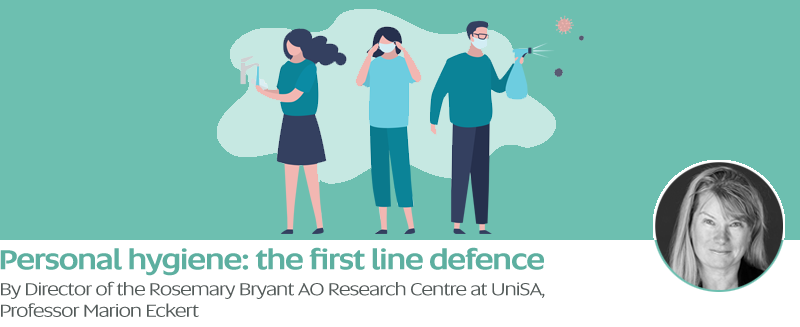
There’s no doubt that the pandemic has impacted every facet of our lives, but none more so than our personal health and safety. Personal hygiene has become our first line of defence and without this, other measures such as border controls and quarantines would not be as effective. We need to think deeply about this for ourselves and our society – personal hygiene is not a matter of preference, to keep well, it is a priority.
To disrupt the virus, washing hands frequently with soap and water, using alcohol-based hand sanitisers, and disinfecting objects and surfaces have all become our norm. Social distancing – or more appropriately, physical distancing of 1.5 metres between individuals – is now a known term; tap-and-go payments are the preferred option to avoid the use of cash; and handshakes, hugs and kisses are nearly a thing of the past.
While it’s been said that “we are flying the plane as it’s being built”, the basic principles for containing disease have been developed and refined with reference to previous epidemics.
For the most part, the evidence of an early lockdown, home isolation, and successful early execution of personal hygiene measures have all contributed to “flattening Australia’s pandemic curve”. What’s important now, is to remain vigilant, especially as restrictions ease, so that we keep that curve flat and beat COVID-19 together.

Globally, we’ve already begun to divide the world in two – pre-COVID-19 and post-COVID-19 – and this is clear in the way we think about health, employment, careers, business models, the internet, travel, leisure, the list goes on. And, there can be no doubt that COVID-19 will continue to cast a long shadow over the national and global economy for a long time to come. But where are we likely to see the biggest impacts? Which areas will feel the most profound changes, and what will the knock-on effects be?
The answer to this question is likely hiding in plain sight – the property market, and especially the commercial property market.
While COVID-19 has reminded us all of the importance of a secure home in a time of crisis, it has also shown that working from home is a valid option, facilitated by a digitally enabled world. The result is that conventional offices and bricks and mortar retail spaces now look more like a hindrance than a help to business.
Lockdown has proven that work can go on without the everyday commute and physical office presence. And, while businesses may not yet be ready to fully embrace remote work, there’s no doubt that managers and business leaders can see the potential for sustained productivity and lower outlays when people work from home.
In all likelihood, the owners of commercial properties will need to reinvent their business models as vacancy rates rise and floorspace rentals fall. It will be a challenge for many landlords, but in business, innovation is always the pathway to success.
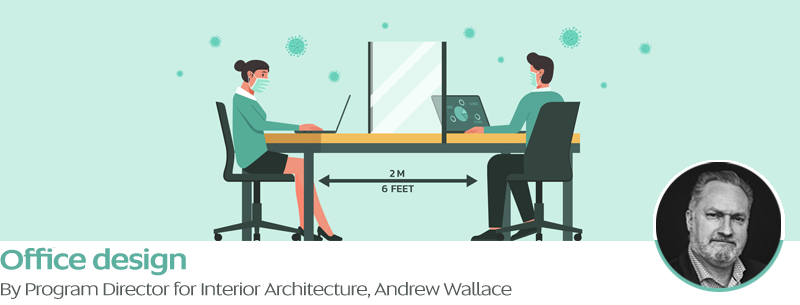
COVID-19 has taught us that working from home has many upsides for both workers and companies. Higher levels of productivity, a greater sense of connectivity with the local community, fewer commutes, more flexibility and increased work satisfaction make for happier employees.
Similarly, businesses have benefitted from savings in travel, utilities and less sick leave, which have delivered greater efficiencies and more innovative approaches to work.
What does this mean for the centralised office? From the recent COVID-19 experiment, most workers and managers are happy with remote working, with many wanting to continue it. And with research showing that COVID-19 spreads most easily in enclosed spaces for extended periods, the traditional open plan office has come under fire. The potential benefits from reduced occupancy costs due to fewer people permanently occupying office space need to be balanced against risks of dislocation and a lack of cohesiveness in organisations.
Where workers have returned to the office, albeit with social distancing measures to limit risks, there is debate as to the future of open plan – but it’s going to take more than vacating every second desk or imposing taller cubicle walls, which largely defeat the point of open plan offices in the first place. Disinfecting, social distancing and avoiding shared facilities is step one, but how do we balance the organisational needs that are pulling us together with the health forces that are pushing us apart?
A blended option may be the most realistic outcome, where a proportion of staff are rostered to work from home on any given day. This has been the lived reality for some organisations during COVID-19 but could be a more permanent mode of work. For most, this will mean the end of the individual desk, as shared spaces facilitate rotations. It will also flag an increase in private spaces for video conferencing, as well as new arrangements for storing personal items, and improved hygiene protocols for handing over equipment and furniture.
There’s huge potential to rethink the open office. A well-managed rotation of office days and seating arrangements could help us get to know more of those colleagues who, because they used to sit a few too many desks away, we rarely talked to. After all, connection is at the heart of humans.
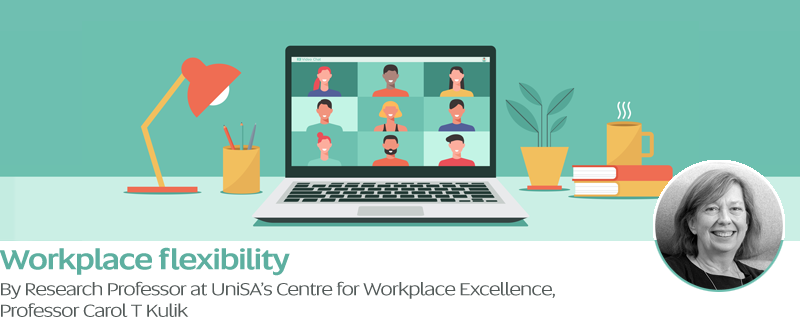
The COVID-19 work-from-home experiment demonstrated that flexible work is possible on a large scale. But for flexible work to be effective, organisations need a system-wide approach to support and evaluate remote workers.
During the pandemic, employees didn’t just work from home, they also managed family work schedules, children’s online learning, and their own caregiving responsibilities – all from the one location. This pushed organisational definitions of ‘flexible work’ to their limits, far beyond part-time hours or staggered start and end times. Organisations learned that flexibility itself needs to be flexible.
Managers sometimes worry that out-of-sight workers will be less productive, but most organisations maintained overall productivity while employees worked from home. Some employees treasured the opportunity to engage in deep, strategic thinking that benefits from extended and uninterrupted blocks of attention. It can be hard to find those quiet hours in an open plan office.
Once employees found their footing, it was managers’ turn to pivot: they learned to adapt, upskill, and embrace employee evaluations that focused on productivity rather than facetime. They found new ways to connect with team members without suffocating them. The most successful experiments involved brief daily catchups and drop-in virtual office hours that enabled team members to control interruptions and structure their workday.
COVID-19 demonstrated that, with the right support, flexible work can simultaneously boost wellbeing and productivity. But some employees felt isolated – they missed the spontaneous hallway conversations. Effective teams found ways to build fun into remote working via Zoom karaoke, virtual coffee cafes and remote happy hours.
Maintaining connections during work from home was reasonably straightforward; creating connections was harder, and managers struggled to onboard new team members and integrate them into team cultures.
COVID-19 opened our eyes to the opportunities of workplace flexibility. Whether we take these lessons into the ‘next normal’ is yet to be seen.
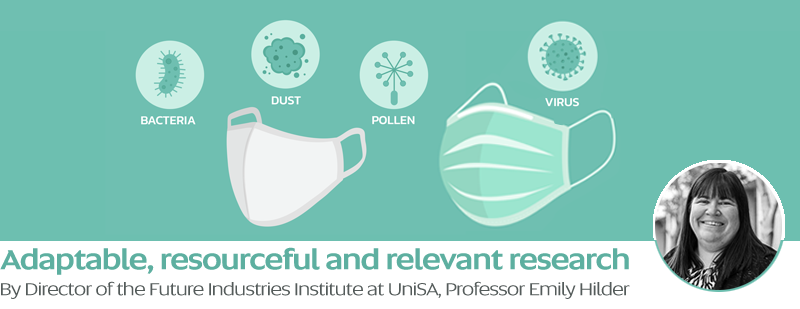
We often talk about adaptability and how important it is in order to stay relevant, to grow and succeed. In COVID-19, more than any other time, we have really seen what this means in practice and observed just how adaptable people can be.
Research, by its very nature is uncertain, but the way that our researchers and those supporting our research have dealt with uncertainty over the past few months has been no less than inspirational. And, as we look to the ongoing impacts of COVID-19 on businesses, including our industry partners, we know that the ability to adapt will be critical.
When we have clarity of purpose and are adaptable, we have greater capacity to think ahead and focus on finding solutions. Adaptable people are resourceful but they also see opportunities where others see failure. In the past few months our work with Detmold and SA Health to locally manufacture surgical and respirator masks, has demonstrated just this. Facing major challenges at every step – from sourcing raw materials and equipment, to establishing testing capability and expertise in new areas – this project has shown that when you’ve got smart people focused on working together to solve a problem, then you can solve big problems quickly.
The speed in which we’ve been able to adapt to new ways of working and communicating has not only shown us that working remotely can be done, but that it can be done well. Research is a global enterprise, and despite the travel restrictions, our researchers have proven that they can adapt and collaborate across boundaries.
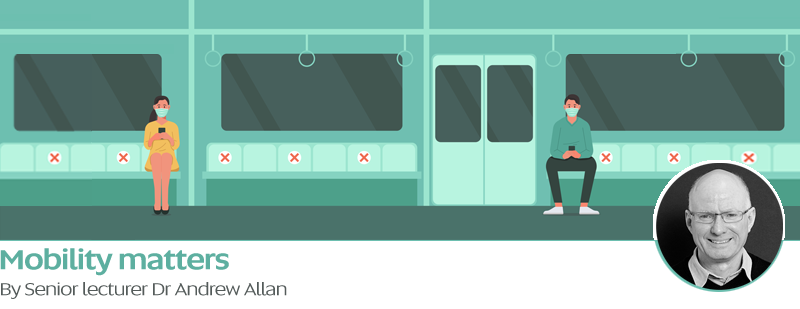
There’s no doubt that COVID-19 has wrought disruption on Australia’s transport system. Yet despite the downfall, it has given us opportunities to rethink and re-evaluate transport systems, policy and infrastructure.
In Adelaide, necessary health and safety precautions have led to a massive decline in public transport, partly because of a lack of confidence from commuters, but also due to a decline in operational capacity of public transport as a result of social distancing. Consequently, the demand for private cars has increased – hand-in-hand with road congestion, a greater need for carparks and, of course, damaging car emissions.
Around the world, cuts to travel have clearly helped reduce carbon emissions, leading to cleaner skies, less traffic congestion (particularly in city centres) and people making a more conscious effort to physically exercise. These are factors we should sustain, presenting opportunities for government to consider emissions-free travel options, such as high-speed rail travel between state capitals and major regional cities. Paradoxically, while overall urban travel-related carbon emissions have reduced, the convenience of the car has very much solidified on suburban roads and shopping centres.
As the risk of community transmission reduces, community pressure to return to a semblance of pre-pandemic normalcy may boost public transport, which also raises important policy issues such as the use of personal protective equipment to allow commuters to be in closer proximity to each other, potential for tracking technology to link to ticketing, as well as the need to revisit cleaning regimes and hygienic ventilation systems in enclosed areas.
If we do want to reinstate our mass transit systems to what they were pre-COVID-19, it’s clear that the community, governments and businesses will need to work together to build greater systems’ resilience and greater flexibility to accommodate change.
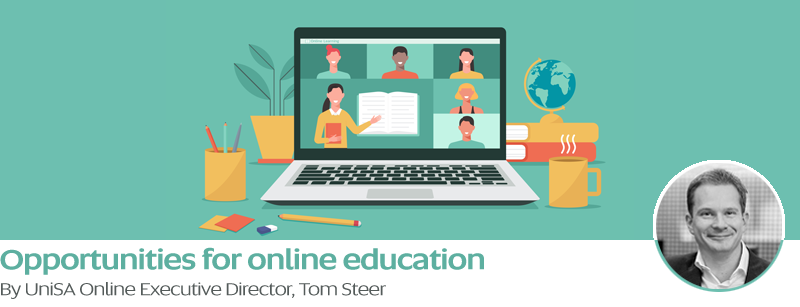
The pandemic has accelerated a number of existing technology-related shifts for digital-ready, customer-focused organisations. Distance learning has been one of the big winners, with the World Economic Forum (WEF) naming it in the top 10 technology trends amid COVID-19, alongside highly visible trends, such as increases in online shopping, contactless payments, remote work and telehealth.
For more than 1.57 billion students affected by compulsory school and university closures across 191 countries worldwide, online education was a much needed and swiftly implemented reprieve to the shutdowns. And, while online learning has provided continuity and stability for students in recent months, for many students it’s opening their eyes about the quality and convenience advantages that the mode offers.
Just as the desire to work remotely has increased, so too has the acceptance and appreciation of online learning and its ability to help students fit study in and around their lives.
At UniSA Online, we’ve seen a 60 per cent increase in enrolments from across the country since the start of the year as students have been attracted to our 100 per cent online degrees with seven days a week academic and student support. Some students now have more hours in their day for study as they’re working from home and no longer commuting, others may have lost their jobs or had their hours significantly reduced and are now looking to retrain in new sectors. Whatever their initial motivation, engaging in quality online education is proving a positive focus and a productive use of time in a difficult period.
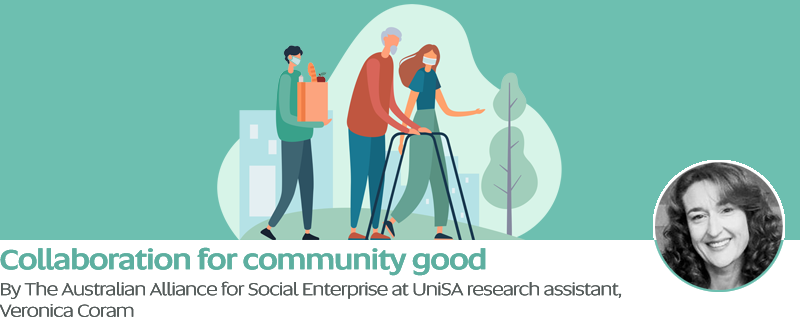
While COVID-19 has been a significant challenge for the community sector in South Australia, research from The Australian Alliance for Social Enterprise suggests the sector has responded with remarkable resilience, shining a light on the capacity of society, organisations and individuals to adapt and work together in times of hardship.
Community sector workers are the forgotten ‘essential workers’ in the pandemic yet it’s their work that’s been so vitally important in these times of crisis. Supporting some of Australia’s most vulnerable people – those experiencing homelessness, people living with disability, and those at risk of family and domestic violence – community sector workers have been working tirelessly to protect others in lockdown.
Early on, managers and frontline workers in the community sector reported a range of logistical challenges – especially around keeping clients engaged with services remotely. But within weeks they’d admirably adapted with innovative forms of service delivery such as online counselling sessions, Zoom dance classes for people with disability, and drive-by goodie-bag drop-offs for vulnerable children, many of which can and will be continued beyond the crisis.
Strong working relationships within and between organisations, as well as with government agencies, have been key to the community sector’s success in maintaining and even expanding their support to people in need. One example is collaborative efforts delivering emergency accommodation for hundreds of people sleeping rough on Adelaide’s streets. Now, work is now under way to transition these people into more sustainable accommodation with wraparound supports in place.
In the words of one community sector manager, “collaboration has never been this good” – let’s hope this sentiment remains when we reach the other side.
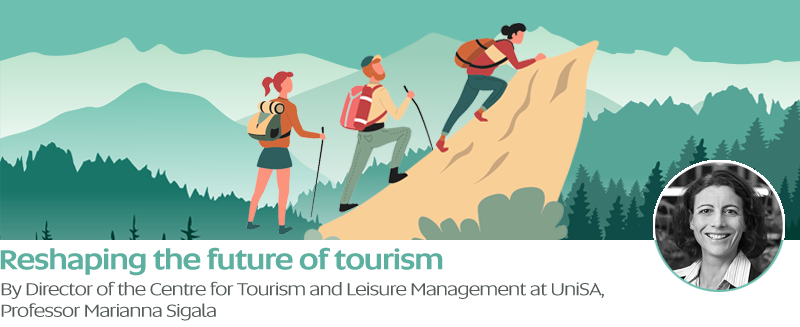
The arrival of COVID-19 dealt an unprecedented blow to the tourism industry. But while lockdowns, restrictions and border closures forced a synchronised slowdown of travel worldwide, it also opened doors for a much-needed sector reset, one with a focus on sustainability.
Overtourism – epitomised by herds of people paying tribute to popular Instagrammed destinations – is no longer on offer, forcing (or perhaps providing opportunities for) tourists, destinations, policy makers and local communities to reflect on previous practices, to rethink their attitudes and behaviours, and to consider different priorities for more responsible tourism.
While COVID-19 has forced the hand of many would-be travellers, it has also triggered positive change, where people are more aware of their impact on the environment, climate change and society around them. With overseas travel off the cards, tourists are holidaying in local communities, exploring lesser known destinations, or seeing popular ones with fresh eyes.
Tourism operators are also adapting to meet the expectations of these ‘new’ travellers. Savvy players – who initially took advantage of the slowdown to renovate and upgrade, upskill staff and rethink business models – are now focused on a more sustainable future, that embraces both the needs of the tourist and ensures business continuity.
Certainly, tourism is evolving before our eyes; but the innovations, social and economic changes it generates are well overdue and much needed to ensure tourism destinations are still here for future generations to enjoy.
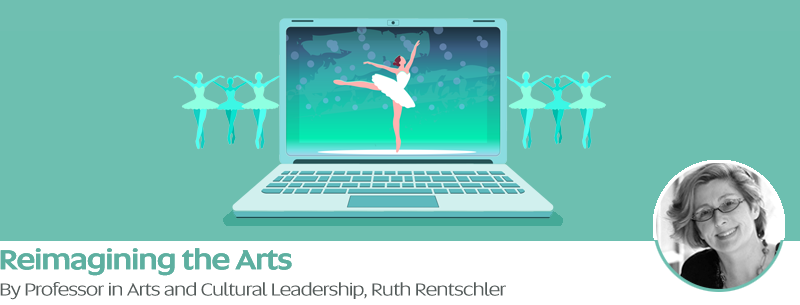
COVID-19 has proved a crisis unlike any other for the arts. When health measures ramped up, the arts ramped down, shutting down everything from festivals to visual arts, and everything in between.
For a state such as South Australia, that invests heavily in arts and cultural tourism, the fallout has been devastating – impacting jobs, livelihoods and the economy. With global tourism expecting a loss of $US22 billion, much of which is connected to the arts and cultural tourism, a rapid reframe of the sector is urgent and important.
A redesign of strategies and structures, experimental modes of delivery, additional precautions for the health and wellbeing of artists, audiences and festival organisers, as well as emerging performance technologies, are all critical to navigating through COVID-19.
Going online is one way that the arts have responded, with a fast-tracking of new technologies enabling shows to be streamed online. Yet to encourage audiences, many of these shows were offered free, and now there’s an expectation among the public that they will remain that way. While technology must be one of the key elements to recovery, the way it has been largely implemented does not bring income to struggling arts organisations.
There is also a change in the global ecosystem, with arts organisations seeking new ways to source and protect their product, as well as find new ways to connect locally, rather than globally. While this may mean more jobs for local artists and arts managers, many factors remain in limbo, especially as a second wave of the virus threatens Australia.
Perhaps the most significant silver lining will come from the emerging entrepreneur. Entrepreneurship is about being adaptive, innovative and proactive to creative disruption. When disruption surrounds, those who can move swiftly are more likely to adapt quickly to a new way of working. For some decades, entrepreneurial arts leaders have been emerging and now, because of the pandemic, entrepreneurship is most likely to be greatly prized, recognised and rewarded.
University of South Australia academics are working on a range of research projects to support global efforts to combat COVID-19.
UniSA working on ‘pandemic drone’ to detect coronavirus
UniSA Professor of Sensor Systems Javaan Singh Chahl is partnering with a Canadian company to develop a drone to remotely monitor and detect people with infectious respiratory conditions.
The drone will be fitted with a specialised sensor and computer vision system that can monitor temperature, heart and respiratory rates, as well as detect people sneezing and coughing in crowds, offices, airports, cruise ships, aged care homes and other places where groups of people may work or congregate.
Prof Chahl, who holds a joint appointment with Defence Science and Technology (DST), is working with Draganfly Inc, a North American drone technology company, to immediately start integrating commercial, medical and government customers.
Read more about the technology on the UniSA website.
UniSA joins global hunt to find key molecule to block COVID-19
A UniSA molecular biologist is working with a world leader in artificial intelligence-based drug discovery to help find a molecule that could prevent the SARS-CoV-2 coronavirus strain causing COVID-19 from infecting human cells.
Dr Gokhan Cildir has been selected by San Francisco company Atomwise to collaborate on research to use artificial intelligence to discover compounds that could successfully fight SARS-CoV-2.
From millions of molecules screened virtually, Atomwise has identified likely contenders and has sent those compounds to Dr Cildir to test at the Centre for Cancer Biology (CCB) in Adelaide. The goal is to develop inhibitors for the ‘spike’ protein used by SARS-CoV-2 to invade human cells.
“Although coronavirus uses many different proteins to replicate and invade cells, the spike protein is the major cell surface protein that it uses to bind to a host receptor — another protein that acts like a doorway into a human cell,” Dr Cildir says.
Read more about the research on the UniSA website.
Joint project to help halt the spread of COVID-19
In an Australian first, millions of respirator and surgical masks made by Adelaide packing company Detmold are being tested at UniSA and Flinders University laboratories to help stop the spread of COVID-19.
The State Government has allocated $450,000 for the project through which more than 20 million masks are being produced and tested each month for local and national markets.
Director of UniSA’s Future Industries Institute, Professor Emily Hilder, says the University was excited to collaborate with Flinders University to support local testing of masks.
“This both improves our capacity to respond to the immediate demands due to COVID-19 and also provides new opportunities that will support the long-term viability of manufacturing businesses in South Australia”, Prof Hilder says.
Read more about the development on the UniSA website.
Locked down and liquored up? UniSA research reveals the truth about Australians’ drinking during COVID-19
Researchers at UniSA’s Ehrenberg Bass Institute for Marketing Science have found that despite predictions that the lockdown might cause a spike in alcohol consumption, the truth is, there was very little change in people’s drinking habits during the restrictions.
Not only did overall wine consumption rates remain reasonably stable, but people tended to buy their wine from the same places and drink wine on the same occasions.
In a paper – How has wine and alcohol purchasing and consumption changed during COVID-19 isolation in Australia? – UniSA researchers found that across red and white wine, beer and spirits, only 15 to 18 per cent of respondents reported drinking more often than before lockdown.
Research lead Professor Larry Lockshin says the representative survey of Australian wine consumers conducted in May this year, will form part of a wider international project being undertaken by the Academy of Wine Business Research across 11 countries to compare how different countries and cultures reacted to pandemic isolation measures.
Read more about the research on the UniSA website.
UniSA offers short course in aged care to help upskill Australians in critical areas post COVID-19
UniSA is running a six-month course in aged care as part of a Federal Government recovery package to help upskill Australians in areas critical to a post-pandemic economy.
Drawing on the University’s deep expertise and industry connections in allied health and nursing, as well as advanced online education capabilities, UniSA invited applications for a Professional Certificate in Aged Care, with students starting in late May. The qualification is being delivered via UniSA Online, the University’s innovative in-house 100 per cent online study arm.
The new six-month program will set graduates up for a career in one of the country’s fastest growing sectors and was available at the heavily discounted price of $1250.
The course was aimed at people who have been displaced in the workforce because of COVID-19 and wished to re-train for entry into the aged care industry.
Read more about the course on the UniSA website.